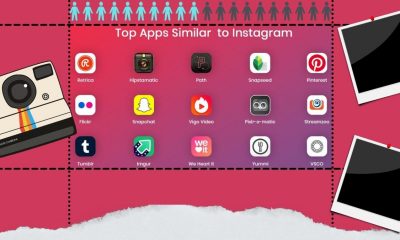News
What is Social Computing? Definition, Examples, and Background
Definition 1:
Social computing is an area of computer science that is concerned with the intersection of social behavior and computational systems. It is based on creating or recreating social conventions and social contexts through the use of software and technology.
Definition 2:
The interaction of social behavior and computational systems is the focus of social computing, a branch of computer science. It is based on the use of software and technology to create or recreate social conventions and social settings. Blogs, email, instant messaging, social network services, wikis, social bookmarking, and other examples of what is commonly referred to as social software exhibit social computing concepts.
Definition 3:
“Social computing facilitates social interaction via computers.” It should be considered what social computing is all about. However, Social computing is not to be confused with artificial intelligence applications such as socially intelligent computing, in which the computer is meant to demonstrate social behaviors and make the user feel more socially involved when they are not.
History of Social Computing
The idea that humans—and human behavior—are deeply social is the starting point for social computing. Humans orient to one another from birth, and as they grow older, they develop capacities to interact with one another. This includes everything from facial expression to gestures to spoken and written words. As a result, people are acutely aware of the conduct of those around them and make a plethora of decisions influenced by their social environment. Social knowledge provides a foundation for reasoning, planning, and coordinating activity, whether it’s finishing up a discussion when the audience starts fidgeting, preferring the full restaurant over the practically deserted one, or crossing the street against the light because everyone else is doing it.
The idea of ‘Social Computing’ is that by making socially produced information available to users, it is possible to design digital systems that enable meaningful functionality. This data can be directly presented, such as when systems display the number of people who have rated a review as helpful or unhelpful. Alternatively, the data could be offered after it has been filtered and aggregated, as when algorithms propose a product based on what other people with comparable purchase histories have bought. Alternatively, as with Google’s page rank algorithms, which order search results based on the number of pages that (recursively) point to them, the information might be presented indirectly. In each of these scenarios, information generated by a group of individuals is used to offer or improve the system’s functionality. Systems like this, as well as the procedures and concepts that underpin them, are the focus of social computing.
PLATO, the PLATO computer system based at the University of Illinois at Urbana Champaign in 1973, may be the earliest example of social computing in a live production environment with hundreds, if not thousands, of users, when social software applications for multi-user chat rooms, group message forums, and instant messaging appeared all within that year. Email was introduced in 1974, along with the world’s first online newspaper, NewsReport, which featured information supplied by users as well as articles authored by editors and reporters.
The Wisdom of Crowds by James Surowiecki popularized the concept of social computing, which involves supporting “computations” carried out by groups of people. Collaborative filtering, online auctions, prediction markets, reputation systems, computational social choice, tagging, and verification games are examples of social computing in this sense. This sense of social computing is the emphasis of the social information processing page.
Examples of Social Computing:
Blogs, wikis, Twitter, RSS, instant messaging, multiplayer gaming, open source development, as well as social networking and social bookmarking sites, are all examples of social computing. Web 2.0, which may be viewed of as a framework of apps supporting social computing activities, is closely tied to the concept of social computing.
Social Computing and Business
Within an enterprise, social computing has the potential to empower and engage employees, as well as generate business benefits. Paul Galvin describes how installing SharePoint, for example, can help with this process:
Social computing can also be used by businesses to connect with their customers and promote their brands. Consumer relationship management (CRM) can benefit from social computing since it allows a company to monitor public perception of its brand and respond swiftly to customer complaints. Crowdsourcing is also being used by many major organizations for research. Enterprise 2.0 refers to the usage of social computing applications by businesses.
-

 Marketing Tips5 days ago
Marketing Tips5 days agoWhat is my Instagram URL? How to Find & Copy Address [Guide on Desktop or Mobile]
-

 Cyber Risk Management22 hours ago
Cyber Risk Management22 hours agoHow Much Does a Hosting Server Cost Per User for an App?
-

 Grow Your Business5 days ago
Grow Your Business5 days agoBest Instagram-like Apps and their Features
-

 Outsourcing Development23 hours ago
Outsourcing Development23 hours agoAll you need to know about Offshore Staff Augmentation
-

 Software Development23 hours ago
Software Development23 hours agoThings to consider before starting a Retail Software Development
-
Marketing Tips5 days ago
B2B Instagram Statistics in 2024
-

 Grow Your Business15 hours ago
Grow Your Business15 hours agoThe Average Size of Home Office: A Perfect Workspace
-
Solution Review15 hours ago
Top 10 Best Fake ID Websites [OnlyFake?]





